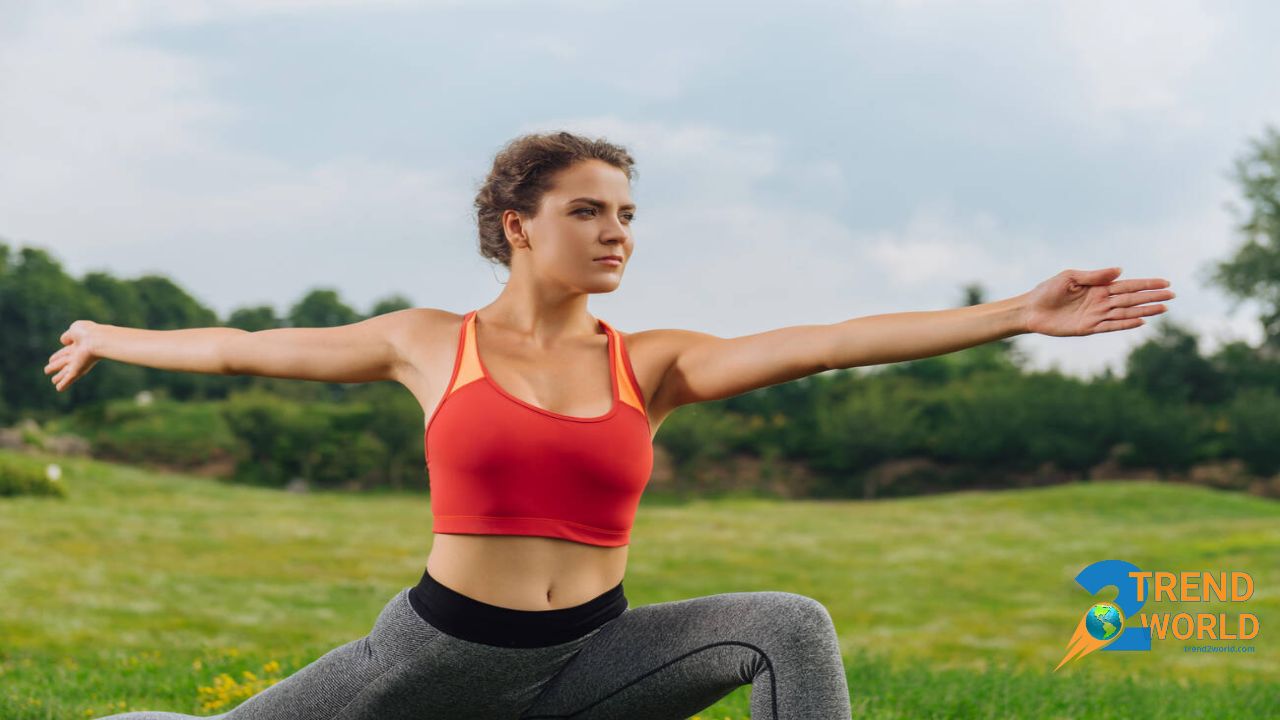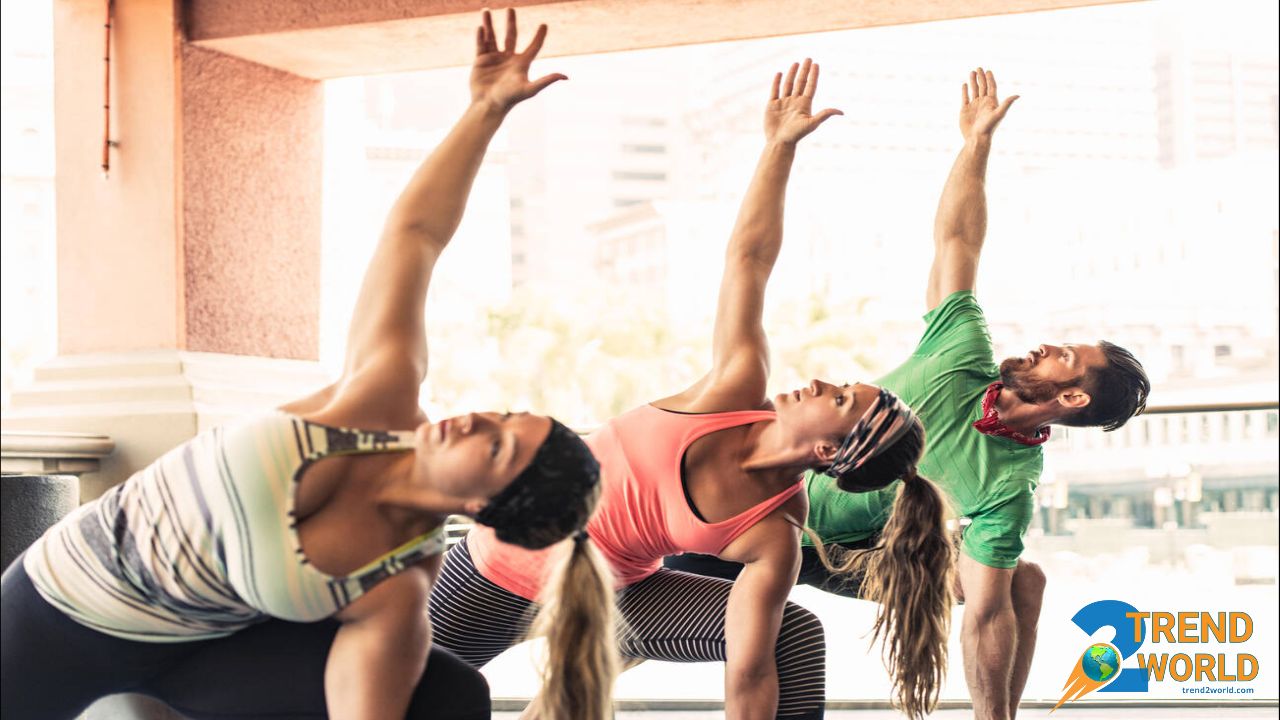Table of Contents:
- How Do These 10 Yoga Poses Help with Rapid Weight Loss and Lasting Health?
- Boosting Metabolism with Yoga: A Natural Path to Fat Burning and Weight Loss
- Improved Mindset and Healthier Habits through Yoga
- Increasing Muscle Tone and Flexibility with Yoga
- Stress Reduction and Emotional Eating through Yoga: A Complete Transformation
- 10 Yoga Poses for Weight Loss
- What Others Are Saying About This Program
Imagine waking up every morning feeling lighter, more energized, and stronger than ever before. When you look in the mirror, you smile because you see the body you’ve always dreamed of one that is lean, flexible, and full of vitality. Now, imagine the confidence that comes with discovering the secret to rapid weight loss.
What if we told you that this transformation is not just a dream, but a reality you can achieve and it all starts with 10 simple yoga poses?
Yes, you heard that right. Yoga this ancient practice known for improving flexibility and calming the mind can be the key to your rapid weight loss. These poses are specifically designed to burn excess fat, boost metabolism, and strengthen both your body and mind.
Are you ready to begin this transformation? This special opportunity could change your life. Keep reading to discover how these 10 yoga poses can bring you closer to your weight loss goals.
Don’t Miss Out on the Latest Trends! 
Follow us on TikTok for exclusive gift ideas, trends, and inspiration! 

Are you tired of the endless struggle with weight loss? It’s time for a change.

We understand you. You may have been caught in the cycle of restrictive diets, exhausting workouts, and weight loss plans that haven’t delivered results. The frustration of putting in so much effort and seeing so little progress can be draining.
But here’s the truth: What you need is not more restrictions or harder workouts it’s something that nurtures your body, mind, and soul. Yoga is exactly what you need.
Yoga is not just a physical exercise; it’s a holistic approach to health that addresses the root causes of obesity stress, emotional eating, and metabolic imbalance. By incorporating these 10 yoga poses into your daily routine, you can finally achieve weight loss and:
- Burn fat quickly: without strict diets or intense workouts.
- Boost your metabolism: helping you burn more calories even at rest.
- Achieve a balanced and calm mind: making it easier to stick to healthy habits.
- Increase strength and flexibility: leading to a leaner, toned body.
If you’re tired of struggling with weight loss, this is the change you’ve been waiting for. Yoga offers a miraculous solution that not only helps you lose weight but also transforms your entire lifestyle.
How Do These 10 Yoga Poses Help with Rapid Weight Loss and Lasting Health?

Now, let’s dive deeper into how these 10 yoga poses specifically impact weight loss. These movements have been carefully selected to facilitate fat burning, boost metabolism, and improve overall health. Here’s what you can expect from these exercises:
- Powerful Fat Burning: Some yoga poses like Sun Salutation and Warrior engage large muscle groups, causing you to burn more calories. These poses activate your body’s fat-burning systems, helping you shed weight faster.
- Increased Metabolism: Yoga has been scientifically proven to increase metabolism by regulating hormones and improving digestion. With this change, your body can burn calories more efficiently.
- Reduced Stress and Emotional Eating: Stress is a major barrier to weight loss. Yoga helps calm your mind, reducing cortisol levels (the stress hormone). Lower stress means less emotional eating.
- Improved Muscle Tone and Flexibility: Unlike traditional cardio exercises that may burn fat but not build muscle, yoga helps you strengthen and tone your muscles, creating a leaner, more flexible body.
- Better Mindset and Healthier Habits: Yoga isn’t just about physical benefits it cultivates a positive, healthy mindset. When you start yoga, you’ll develop a better attitude toward food, exercise, and self-care.
With consistent practice of these 10 poses, you’ll start seeing results faster. Your body will become stronger, lighter, and more coordinated. This isn’t just a temporary fix; it’s a real transformation.
Our recommended product for you to have the best yoga experience – click on the image below!

 Trending Home! Our top fitness, health, and yoga picks are flying off the shelves—don’t miss out!
Trending Home! Our top fitness, health, and yoga picks are flying off the shelves—don’t miss out!
 Grab yours before it’s too late!
Grab yours before it’s too late!
Boosting Metabolism with Yoga: A Natural Path to Fat Burning and Weight Loss

The metabolism plays a key role in burning calories, producing energy, and promoting weight loss. Many people are looking for ways to increase their metabolism to lose weight quickly and achieve fitness. While intense exercises like running and weightlifting can boost metabolism, yoga is also a powerful and natural way to enhance the body’s metabolism, offering numerous benefits not only for physical health but also for mental relaxation and stress reduction.
What is Metabolism and Why Is Increasing It Important?
Metabolism refers to the process by which your body converts food into energy. This energy is used for vital functions like breathing, digestion, regulating body temperature, and physical activities. The faster your metabolism, the more calories your body burns, and as a result, you lose weight more easily.
Factors that affect metabolism include:
- Age: As we age, metabolism naturally slows down.
- Gender: Men generally have a higher metabolism than women.
- Muscle Mass: The more muscle you have, the more calories your body burns.
- Hormones: Hormonal imbalances can slow down metabolic rate.
- Physical Activity: Exercise and physical training increase metabolic rate.
Yoga is one effective way to boost metabolism, influencing the body’s systems in various ways.
How Does Yoga Boost Metabolism?
Yoga can help increase metabolism in several ways:
- Stimulating the Endocrine System and Hormonal Balance
Certain yoga poses directly impact the glands responsible for regulating metabolism. For example:
- Camel Pose (Ustrasana) and Cobra Pose (Bhujangasana) stimulate the thyroid gland, which is responsible for regulating metabolism.
- Twisting poses like Spinal Twist (Ardha Matsyendrasana) promote detoxification and improve digestive function, which has a direct impact on metabolism.
- Increasing Blood Flow and Oxygen to the Muscles
Yoga poses with stretching and deep breathing increase blood flow throughout the body. This boost in circulation leads to:
- Better oxygen supply to muscles and organs
- Improved function of glands and the digestive system
- Higher energy levels and reduced fatigue
When the body receives adequate oxygen, metabolism becomes more active, and more calories are burned.
- Improving Digestive Function and Detoxification
A healthy metabolism is closely linked to proper digestive function. Yoga stimulates the intestines, enhances stomach activity, and regulates digestive enzymes. Certain yoga poses such as:
- Seated Forward Fold (Paschimottanasana)
- Twisting Poses
These poses enhance digestive function and improve nutrient absorption and fat burning.
- Strengthening Muscles and Increasing Calorie Burn at Rest
Strength-based yoga poses like Warrior Pose (Virabhadrasana) and Plank Pose (Phalakasana) strengthen muscles. Stronger muscles burn more energy, even at rest, and help increase metabolism:
- With increased muscle mass, metabolism remains elevated, even when you’re not actively exercising.
- Reducing Stress and Balancing Cortisol Hormones
One of the major barriers to high metabolism is stress and anxiety, which elevate cortisol levels in the body. High cortisol:
- Leads to fat accumulation in the abdominal area
- Slows down metabolism and reduces fat burning
Yoga, through calming practices like Meditation and Corpse Pose (Savasana), reduces stress and helps regulate cortisol levels, supporting a more efficient metabolism.
Improved Mindset and Healthier Habits through Yoga

Yoga is not just a physical exercise; it is a holistic approach to improving mental and emotional health. Through yoga practice, you will develop a new mindset toward yourself, life, and the world around you. These mental shifts can help you create healthier habits, lead a more balanced lifestyle, and better cope with daily challenges.
Yoga is designed to strengthen both the body and mind simultaneously. The practice focuses on breathing, relaxation, concentration, and meditation, ultimately reducing stress, increasing awareness, and improving overall emotional wellbeing. This article explores how yoga can positively influence your mindset and promote healthier habits.
How Yoga Improves Your Mindset
Yoga is a comprehensive practice that connects both your body and mind. This long-term connection can have profound effects on your mental state and how you view life. Here are some ways yoga can improve your mindset:
- Increased Awareness and Mindfulness
Yoga emphasizes being present in the moment. In every pose, you must direct your full attention to your body and breath, which helps release worries and negative thoughts. These mindfulness techniques gradually make you more aware of what’s happening around you, fostering a more positive mindset.
Benefits:
- Reduced stress and anxiety
- Improved concentration
- Increased life satisfaction and optimism
- Enhanced Relaxation and Stress Reduction
Breathing plays a crucial role in yoga. Pranayama (breathing exercises) are used to relax the mind and reduce stress. These exercises can lower cortisol levels (the stress hormone), creating a sense of calm and ease throughout the day.
Benefits:
- Reduced mental and physical tension
- Increased sense of peace and tranquility
- Better ability to cope with daily stress
- Improved Self-Awareness and Self-Knowledge
Yoga helps you pay closer attention to yourself and get to know yourself on a deeper level. This self-awareness enables you to make better decisions, embrace positive changes in life, and fully accept yourself. You’ll learn to recognize your body and mind more intimately and live in greater harmony with them.
Benefits:
- Increased self-confidence
- Better self-acceptance and acceptance of others
- Reduced self-criticism
- Fostering Positive Thinking and Optimism
Yoga, by focusing on the mind-body connection, teaches you how to identify negative and limiting thoughts and replace them with positive, constructive ones. These mental changes ultimately help you develop a better outlook on life and its challenges, improving your ability to handle difficult situations.
Benefits:
- Strengthened positive attitude
- Better coping skills for problems and challenges
- Greater satisfaction with life
Yoga and Creating Healthier Habits
In addition to an improved mindset, yoga can help you form healthier habits in your daily life. Since yoga emphasizes balance, awareness, self-care, and health, it can assist in building better habits across various areas of your life.
- Enhanced Self-Care and Accountability
Yoga teaches you that both your body and mind need care. This practice encourages you to pay more attention to your physical and mental health, dedicating time for self-care. With this approach, you’ll develop better habits for taking care of yourself.
Benefits:
- Increased focus on physical and mental health
- Greater motivation to care for your body
- Improved sleep quality and daily energy
- Increased Physical Activity and Fitness
Yoga is a complete physical workout that can help strengthen muscles, increase flexibility, and assist in weight loss. Since yoga is often practiced regularly, it encourages consistency, which makes physical activity a habitual part of your life.
Benefits:
- Strengthened muscles and increased flexibility
- Support for weight loss and maintaining fitness
- Increased energy and vitality throughout the day
- Better Nutrition and Increased Awareness of Eating
In addition to physical practice, yoga helps you pay attention to your relationship with food and eating habits. Yoga can guide you toward making healthier food choices and practicing mindful eating. This leads to honoring your body and nourishing it with wholesome, healthy food.
Benefits:
- Improved food choices
- Reduced emotional eating and overeating
- Enhanced health through proper nutrition
- Improved Sleep and Rest
One more healthy habit that yoga can help you develop is better sleep. Yoga reduces stress and physical tension, which can contribute to better and deeper sleep. Breathing exercises and meditation before bed can help calm your mind, making it easier to fall asleep.
Benefits:
- Restful and high-quality sleep
- Increased energy during the day
- Reduced mental and physical fatigue
Increasing Muscle Tone and Flexibility with Yoga

Yoga is one of the most effective methods for strengthening muscles, enhancing muscle tone, and improving flexibility. Through a combination of stretching and resistance movements, yoga helps build muscle strength, improve physical performance, and reduce the risk of injuries. Unlike traditional strength training, which primarily focuses on muscle mass, yoga strengthens muscles in a balanced and coordinated way while also improving flexibility and balance.
What is Muscle Tone and Why is it Important?
Muscle tone refers to the natural state of muscle contraction and readiness at rest. Muscles with higher tone appear stronger, firmer, and more defined, contributing to better overall physical function in daily activities. Increasing muscle tone has several benefits, including:
- Increased Physical Strength: Stronger muscles enhance endurance and the ability to perform physical activities.
- Improved Body Shape and Posture: Well-toned muscles contribute to a leaner, more sculpted appearance.
- Reduced Risk of Injury: Strong muscles provide better support for joints and bones, lowering the risk of injuries.
- Boosted Metabolism: Active muscles burn more calories, aiding in weight management.
- Reduced Chronic Pain: Yoga strengthens the core muscles, helping to alleviate back, neck, and knee pain.
What is Flexibility and Why is it Important?
Flexibility is the ability of muscles and joints to move freely without restriction. Individuals with higher flexibility experience fewer muscle cramps and discomfort while performing physical activities more effortlessly. Some key benefits of increased flexibility include:
- Reduced Muscle Stiffness and Cramps
- Improved Range of Motion in Joints
- Enhanced Balance and Coordination
- Prevention of Sports-Related Injuries
- Better Performance in Daily and Athletic Activities
Yoga is one of the best ways to improve flexibility, as it focuses on stretching muscles, increasing range of motion, and enhancing joint function.
How Does Yoga Help Increase Muscle Tone?
Yoga combines resistance, balance, and stretching exercises to strengthen muscles and improve body composition. Here’s how yoga helps build muscle tone:
- Using Body Weight for Strengthening Muscles
Unlike weightlifting, which relies on external weights, yoga uses body weight to strengthen muscles. Examples of poses that enhance muscle tone include:
- Plank Pose: Strengthens the core and upper body.
- Warrior Pose: Builds strength in the legs and abdominal muscles.
- Downward Dog: Tones the arms, shoulders, and back.
- Increasing Muscular Endurance and Stamina
In yoga, poses are held for several seconds to minutes, which builds muscular endurance and improves resistance to fatigue. Examples include:
- Chair Pose: Strengthens the thighs and calves.
- Boat Pose (Navasana): Enhances core and back strength.
- Enhancing Balance and Muscle Coordination
Yoga requires focus and balance, engaging deep and stabilizing muscles that are often neglected in traditional strength training. Examples include:
- Tree Pose: Improves balance and strengthens leg and core muscles.
- Eagle Pose: Tones the thighs, calves, and arms.
How Does Yoga Improve Flexibility?
Yoga incorporates deep stretches and fluid movements that gradually increase flexibility and reduce muscle stiffness.
- Expanding Range of Motion in Joints
Yoga stretches muscles and tendons, improving joint mobility. Examples include:
- Cobra Pose: Enhances spinal flexibility.
- Butterfly Pose: Opens the hips and increases thigh flexibility.
- Reducing Muscle Tension and Stiffness
Yoga improves blood circulation in muscles, relieving tension and reducing soreness. Examples include:
- Seated Forward Bend: Loosens the hamstrings and back muscles.
- Camel Pose: Deeply stretches the abdomen and chest.
- Improving Muscle Coordination and Balance
Yoga helps muscles work together efficiently, promoting smoother and more controlled movements. Examples include:
- Half Moon Pose: Enhances balance, flexibility, and muscle strength.
- Wheel Pose: Increases spinal flexibility and opens the chest.
Stress Reduction and Emotional Eating through Yoga: A Complete Transformation

In today’s fast-paced world, stress has become a significant part of daily life. Many individuals seek comfort from emotional distress through eating, a pattern known as emotional eating. This behavior often results in unhealthy eating habits, leading to weight gain, and ultimately, physical and mental health concerns. However, yoga offers a holistic solution that can help break the cycle of emotional eating by addressing both the physical and emotional components of stress.
How Yoga Helps with Stress Reduction
Yoga provides a structured approach to stress management through physical postures (asanas), breathing exercises (pranayama), and meditation. When practiced regularly, yoga activates the parasympathetic nervous system, which helps counteract the fight-or-flight response that stress triggers. By calming the nervous system, yoga reduces cortisol levels, the hormone responsible for stress, which can otherwise lead to anxiety, irritability, and even emotional eating.
Through mindful breathing and meditation, yoga encourages a state of awareness and presence, teaching you to observe and manage your stress rather than be overwhelmed by it. When you are less stressed, you are better equipped to handle challenges without resorting to food for emotional comfort.
Yoga as a Tool for Emotional Eating
Emotional eating is often a response to negative emotions like stress, sadness, loneliness, or boredom. Instead of dealing with these emotions directly, people tend to turn to food for comfort, which can lead to overeating and unhealthy eating patterns. Yoga breaks this pattern by fostering a greater awareness of the body’s signals and emotions.
The mindfulness cultivated through yoga helps you become more conscious of your emotional states. By practicing self-awareness on the mat, you begin to notice emotional triggers that lead to overeating. For example, through specific yoga practices such as deep breathing (pranayama) or the restorative poses, you can create space between the emotional impulse to eat and the actual decision to do so. This mindfulness enables you to respond to your emotions in a more balanced way, without using food to mask or suppress them.
How Yoga Promotes Mindful Eating
Yoga’s principles of mindfulness and conscious living can also be applied to the act of eating. Mindful eating, a concept borrowed from meditation and yoga, encourages you to pay full attention to your food—its taste, texture, and how it makes you feel—without distractions. This practice can reduce overeating, as it helps you recognize when you’re full and when eating is truly necessary.
Mindful eating can also change your relationship with food. Rather than eating mindlessly or in response to emotions, mindful eating teaches you to enjoy food without guilt or shame. It empowers you to make healthier food choices, avoid cravings, and reduce the habit of eating out of stress or boredom.
Yoga’s Role in Emotional Regulation
Another essential aspect of yoga is its ability to regulate emotions. When we are stressed or anxious, we may not fully understand the underlying emotions, which leads us to act impulsively, such as turning to food for comfort. Yoga provides an emotional outlet that helps you release tension and process feelings in a healthier way. Through practices like meditation and guided relaxation (yoga nidra), yoga helps create emotional balance, reducing the need to use food to numb uncomfortable feelings.
Yoga also builds resilience, enabling you to face life’s challenges without relying on external sources like food to cope. As you learn to accept your emotions, rather than suppress them, you become more emotionally stable and less likely to use food as a form of escapism.
Yoga Poses for Stress Relief and Emotional Well-Being
Several specific yoga poses are designed to release tension and calm the nervous system, which can be especially helpful for those struggling with emotional eating due to stress. Some key poses for stress relief include:
- Child’s Pose (Balasana): A resting pose that helps calm the mind and reduce tension in the back, neck, and shoulders.
- Forward Fold (Uttanasana): This pose helps release tightness in the hamstrings and lower back, while also calming the nervous system.
- Seated Forward Fold (Paschimottanasana): Known for its ability to calm the mind and relieve stress, it also encourages deep breathing and relaxation.
- Legs Up the Wall (Viparita Karani): This restorative pose encourages relaxation and reduces anxiety, making it a great option for anyone experiencing stress or emotional tension.
- Savasana (Corpse Pose): A final relaxation pose that allows you to fully absorb the benefits of your practice and promote a deep sense of calm and relaxation.
Connecting Body and Mind: A Shift from Emotional Eating to Emotional Healing
Yoga teaches you how to connect with your body in a more profound way, cultivating a sense of awareness and mindfulness in every aspect of your life, including eating. As you become more attuned to the signals your body is sending, such as hunger or emotional discomfort, you will learn to differentiate between true hunger and emotional cravings. By building this awareness, you can break the cycle of emotional eating, replacing unhealthy habits with healthier, more mindful responses to stress.
Additionally, yoga helps you strengthen your emotional resilience. As you become more emotionally balanced, you begin to feel less compelled to turn to food for comfort. Instead, you learn to face your emotions with a sense of calm and clarity, allowing you to process them without relying on external distractions like food.
Conclusion: A Transformative Approach to Stress and Emotional Eating
Yoga provides a transformative approach to managing stress and emotional eating. It empowers you to build a healthy relationship with your body and food, cultivating mindfulness, awareness, and emotional balance. Through consistent yoga practice, you can break free from the cycle of stress-driven emotional eating and replace it with healthier, more sustainable habits.
By reducing stress and increasing emotional awareness, yoga offers the tools you need to foster long-term physical and mental well-being. The result is not just weight loss or physical health improvement but a deep sense of peace, self-acceptance, and emotional healing that will benefit you in every aspect of your life.
10 Yoga Poses for Weight Loss

-
Surya Namaskar (Sun Salutation)
Description:
Sun Salutation is a combination of several movements that engage the entire body. It includes forward bends, stretches, and flexible movements that help activate joints and muscles.
How to do it:
- Start in a standing position.
- Reach your arms up, then bend forward to bring your hands to the ground.
- Step your feet back and enter the plank position.
- Lower your body into a push-up position.
- Move into Downward Dog.
- Bring one foot forward and stretch your body upwards.
- Finally, stretch your arms upward and return to a standing position.
Benefits:
- Boosts metabolism and promotes fast fat burning.
- Strengthens the entire body and increases flexibility.
- Improves cardiovascular health.
- Enhances mental focus and relaxation.
Drawbacks:
- Can be difficult for beginners and requires consistent practice.
- Caution needed for those with back or neck issues.
- Needs precision in form to avoid joint strain.
-
Virabhadrasana (Warrior Pose)
Description:
Warrior Pose is great for strengthening the legs, abdomen, and arms. It helps improve balance, endurance, and posture.
How to do it:
- Start in a standing position.
- Spread your legs and stretch your arms parallel to the ground.
- Bring your right foot forward and straighten your left leg.
- Bend your right knee and move your body forward.
- Keep your shoulders back and your head directed forward.
- Hold the pose for a few seconds, then repeat on the other side.
Benefits:
- Strengthens legs, abs, and arms.
- Improves balance and stability.
- Boosts energy and reduces stress.
Drawbacks:
- Can be challenging for beginners or those with low flexibility.
- Caution needed for people with knee or back issues.
-
Trikonasana (Triangle Pose)
Description:
This pose helps stretch the side muscles and strengthen the abdomen. It also promotes digestion and enhances the digestive system.
How to do it:
- Start standing with your legs wide apart.
- Stretch your arms out to the sides, parallel to the ground.
- Bend to the right, bringing your right hand to the ground.
- Stretch your left arm upward, keeping the body in a straight line.
- Hold the position for a few seconds, then repeat on the other side.
Benefits:
- Improves flexibility and reduces belly fat.
- Strengthens the abdomen, sides, and legs.
- Boosts metabolism and aids digestion.
Drawbacks:
- Requires balance, which may be difficult for beginners.
- People with neck or back issues need to be cautious.
-
Bhujangasana (Cobra Pose)
Description:
This pose strengthens the abdominal muscles and improves posture. It also helps reduce belly fat and increases spinal flexibility.
How to do it:
- Lie on your stomach and place your hands near your chest.
- Keep your toes pointed downward and lift your chest off the ground.
- Gently bend your elbows and pull your shoulders back.
- Lift your head upwards, creating a stretch in your spine.
Benefits:
- Reduces belly fat.
- Strengthens abdominal and back muscles.
- Increases flexibility and strength in the spine.
Drawbacks:
- Can be difficult for beginners.
- Caution needed for those with neck and back problems.
-
Navasana (Boat Pose)
Description:
This pose is designed to strengthen the abdominal muscles and the core. It helps reduce belly fat and improves central body strength.
How to do it:
- Sit on the floor and extend your legs in front of you.
- Stretch your arms forward and lift your legs off the floor, creating a V shape.
- Keep your legs at a 45-degree angle and your body straight.
- Hold the position while controlling your breath.
Benefits:
- Strengthens abdominal muscles and core.
- Reduces belly fat and enhances core strength.
- Improves balance and muscular endurance.
Drawbacks:
- May be challenging for those with back issues.
- Incorrect form can strain the lower back.
-
Phalakasana (Plank Pose)
Description:
This pose keeps the body in a straight line from head to heels, strengthening the abdominal muscles, arms, and back. It also focuses on endurance and overall strength.
How to do it:
- Start in a push-up position and keep your body straight and parallel to the floor.
- Bend your elbows slightly and hold the position in a straight line from head to heels.
- Hold for at least 30 seconds or longer.
Benefits:
- Strengthens abdominal muscles, arms, and back.
- Increases endurance and promotes fat burning.
- Improves core strength.
Drawbacks:
- Can be difficult for beginners.
- Those with shoulder or back problems need to be cautious.
-
Uttanasana (Forward Fold Pose)
Description:
This pose stretches the back muscles and helps improve posture and reduce stress. It also boosts circulation.
How to do it:
- Start standing.
- Slowly fold your body forward and bring your hands to the ground.
- Keep your knees slightly bent and your neck relaxed.
- Hold the position for 30 seconds to one minute.
Benefits:
- Improves flexibility in the back and legs.
- Reduces stress and provides mental relaxation.
- Boosts circulation and aids digestion.
Drawbacks:
- May be difficult for those with knee or back problems.
- Requires careful form when bending the body.
-
Adho Mukha Svanasana (Downward Dog Pose)
Description:
This is one of the main poses in yoga, helping to strengthen the back, arms, and legs. It reduces stress and boosts energy.
How to do it:
- Start in a push-up position.
- Step your feet back and raise your hips towards the sky.
- Keep your hands and feet flat on the floor.
- Keep your head between your arms and press your palms into the ground.
Benefits:
- Strengthens the back, arms, and legs.
- Reduces stress and boosts energy.
- Improves posture.
Drawbacks:
- Can be difficult for beginners.
- Caution needed for wrist or shoulder issues.
- Requires flexibility and may be challenging for some.
-
Setu Bandhasana (Bridge Pose)
Description:
This pose strengthens the back, glutes, and thighs. It also enhances circulation and supports the spine.
How to do it:
- Lie on your back and bend your knees.
- Place the soles of your feet firmly on the ground and keep your arms by your sides.
- Lift your hips off the ground to create a bridge shape.
- Hold the position and then slowly lower back to the starting position.
Benefits:
- Strengthens glutes, abdomen, and thighs.
- Enhances flexibility in the spine.
- Reduces stress and promotes relaxation.
Drawbacks:
- Can be difficult for beginners.
- Caution needed for people with back issues.
-
Dhanurasana (Bow Pose)
Description:
This pose stretches the entire body, helping to reduce belly fat. It also improves spinal flexibility and strengthens the back and abdominal muscles.
How to do it:
- Lie on your stomach and bend your knees.
- Reach your hands backward and grab your ankles.
- Lift your chest and legs off the ground to form a bow shape with your body.
- Hold the position and then slowly release.
Benefits:
- Strengthens the back, abdomen, and legs.
- Increases spinal flexibility.
- Boosts energy and reduces stress.
Drawbacks:
- Not recommended for people with neck or back issues.
- Improper execution can lead to overstretching muscles.
Important Tips for Best Results:
- Practice regularly and consistently.
- Don’t forget to focus on proper breathing during the movements.
- If you feel intense pain, stop the exercise and consult a professional.
- Practice with concentration and calmness to get the most benefits.
Now is the time to start! If you want a healthier, more toned body and a calmer mind, begin your yoga practice today!
What Others Are Saying About This Program:

You shouldn’t just take our word for it—see what those who have tried these exercises are saying.
Jessica, 34, New York:
I had tried everything to lose weight—strict diets, intense cardio, weight loss pills—but nothing worked. Just after 4 weeks of doing these poses, I lost 10 pounds and had more energy than ever. Yoga didn’t just help me lose weight; it helped me connect more deeply with my body and mind. I’ll never go back to the old ways!
David, 45, California:
As a busy dad and professional, I didn’t have time for long workouts. I started yoga in the mornings, and within 6 weeks, I lost 12 pounds. The mental clarity and stress reduction were enough for me to stick with it long-term. Now I’m in the best shape of my life, and I don’t feel like I’ve sacrificed my health at all!
Sarah, 28, Florida:
I was skeptical at first, but yoga completely changed my mindset about weight loss. I lost 15 pounds in 2 months and gained more confidence. Yoga isn’t just a workout; it’s a lifestyle that I now truly believe in!
Take Control of Your Health and Start Your Transformation Today
Your transformation starts today. It’s time to stop wishing for change and start taking action.
With these 10 yoga poses, you’re about to experience an incredible weight loss journey. This isn’t just a solution for weight loss; it’s a complete transformation of your lifestyle.
Our recommended product for you to have the best yoga experience – click on the image below!

 Trending Home! Our top fitness, health, and yoga picks are flying off the shelves—don’t miss out!
Trending Home! Our top fitness, health, and yoga picks are flying off the shelves—don’t miss out!
 Grab yours before it’s too late!
Grab yours before it’s too late!




 At
At